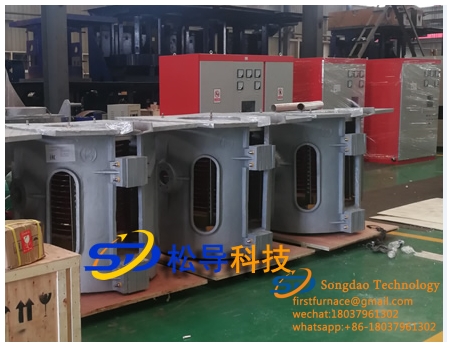- 29
- Nov
How does the induction melting furnace cast steel balls?
How does the induction melting furnace cast steel balls?
Cast steel balls can be divided into three categories including high chromium balls, medium chromium balls and low chromium balls.
1. Quality index of high chromium ball
The chromium content of the high chromium ball is greater than or equal to 10.0%. The carbon content is between 1.80% and 3.20%. According to national standards, the hardness of the high chromium ball must be no less than 58hrc, and the impact value should be greater than or equal to 3.0j/cm2. To achieve this hardness, the high chromium ball must be quenched and tempered at high temperature. At present, there are two methods for quenching high chromium balls in China, including oil quenching and wind quenching. If the test hardness of the high chromium ball is lower than 54HRC, it means that it has not been quenched.
2. Quality index of medium chromium ball
The specified chromium content of the medium chromium ball ranges from 3.0% to 7.0%, and the carbon content is between 1.80% and 3.20%. Its impact value should not be less than 2.0j/cm2. National standards require that the hardness of the chrome ball should be greater than or equal to 47hrc. In order to ensure quality, medium chromium balls should be tempered at high temperature to eliminate casting stress.
If the surface of the steel ball is black and red, it proves that the steel ball has been subjected to high temperature tempering treatment. If the surface of the steel ball still has the metal color, we can judge that the steel ball has not undergone high temperature tempering treatment.
3. Quality index of low chromium ball
Generally speaking, the chromium content of the low chromium ball is 0.5% to 2.5%, and the carbon content is from 1.80% to 3.20%. Therefore, according to national standards, the hardness of the low chromium ball should be no less than 45hrc, and the impact value should be no less than 1.5j/cm2. Low chromium balls also need high temperature tempering treatment to ensure quality. This treatment can eliminate casting stress. If the surface of the steel ball is dark red, it indicates that it has undergone high temperature tempering treatment. If the surface is still metallic, it means that the steel ball has not been tempered at high temperature.
Cast steel balls are usually used in various cement plants, chemical plants, power plants, quartz sand plants, silica sand plants, etc. for large-scale mining.

